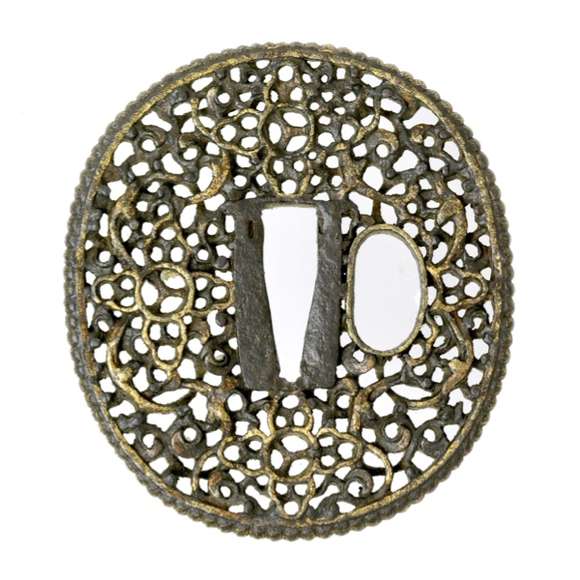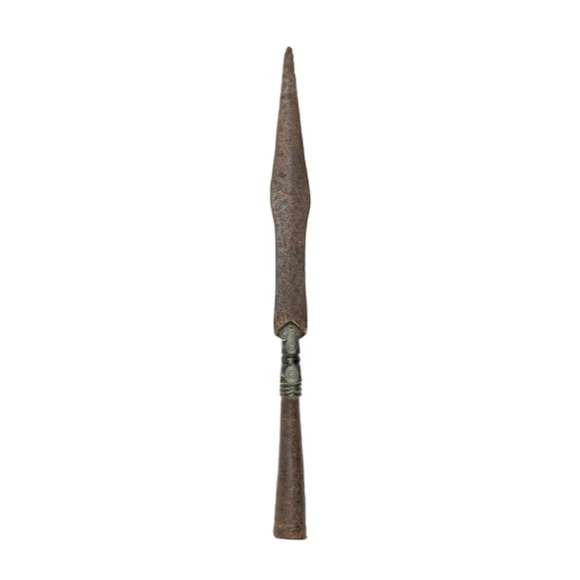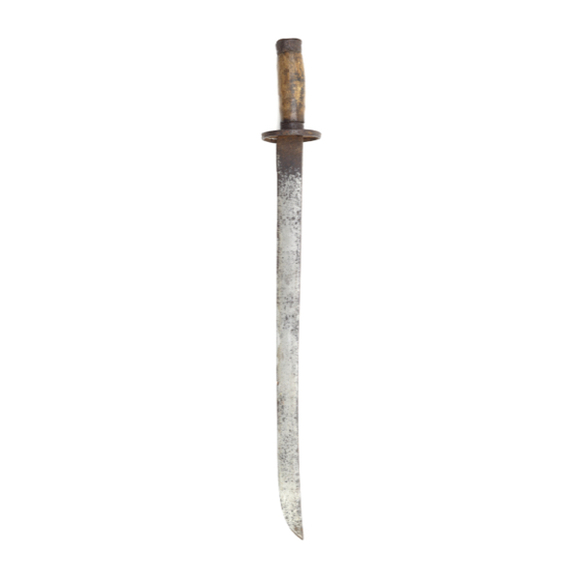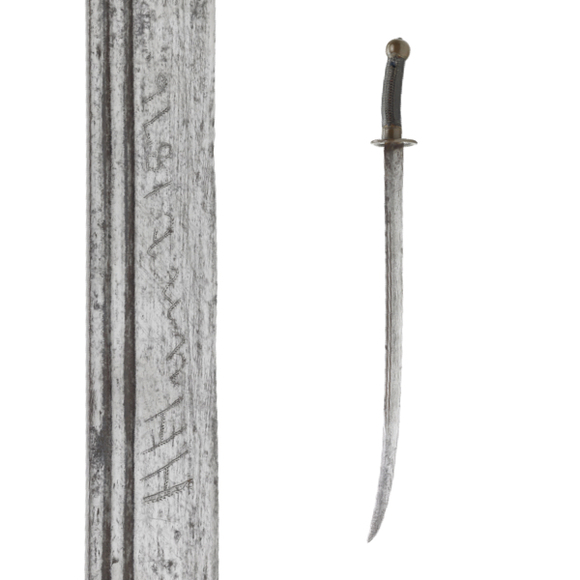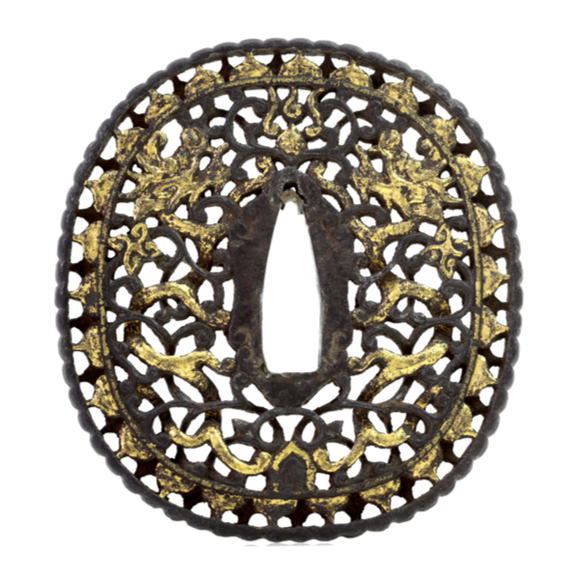A very rare Chinese saber guard dating from the height of the Qing dynasty.

80.5 cm / 31.7 inch
66 cm / 26 inch
forte 7 mm
middle 6 mm
at backedge 4mm
near tip 3mm
forte 35.5 mm
middle 35 mm
near tip 29 mm
823 grams
16 cm from guard
Northern China
Iron, steel, silver, wood, brass, ray-skin
17th to early 18th century
This sword has been sold.
Introduction
Most Chinese sword blades were made with a high-carbon steel plate exposed at the cutting edges. The high carbon content allowed this plate to be hardened to take and hold a very sharp edge, but also made it brittle and prone for snapping. To protect this brittle core that is so vital to a sword's functionality, it was supported on either side with a laminate construction or milder iron and steel. These different layers were forge folded together to create a tough structure.
When polished, most Chinese edged weapons exhibit a wood grain pattern in these supporting layers. Others have a more artistic flair to them where the smith produced a lively pattern by hammering and grinding. Some smiths went even further to show off their skill, creating more elaborate patterns in the steel. One of the rarest and most labor-intensive of these constructions was twist-core, huāwéngāng (花文鋼) or "flowery patterned steel".1
Notes
1. Tom, Philip M. W., “Some Notable Sabers of the Qing Dynasty at the Metropolitan Museum of Art”, Metropolitan Museum Journal, Vol. 36, 2001.
This example
A Chinese saber of early liuyedao form, probably dating to the late 17th or early 18th century. The blade with U-turn grooves inspired by Mughal swords with the same feature, and a false backedge. It has a tunkou (collar piece) that is not made of a separate part of metal -as is usually the case- but is chiseled out of the base of the blade. Quality of the chiseling is superb. Both the U-turn groove and chiseled tunkou are relatively rare and desirable features on Chinese sabers.
The blade is of four row twist-core showing incredible control by the smith: The rows of rosettes are of equal size and in straight lines, following the lines of the grooves and contours of the blade. The pattern was originally etched in mild relief, which can still be felt today.
The hilt fitted in very early style mountings that came with the blade, they have probably been with the piece for a long time. The guard is a thick, round cup guard with silver damascened decor of rings and a stepped side. Ferrule and pommel are of a slightly rounded version of the early angular style. The fittings exhibit an elegant simplicity that reminds of Ming furniture. It is fairly heavy for the size, with good handling characteristics. It's not just a parade showpiece, but a hefty saber with a good feel in hand.
Comparable examples
Chinese twist-core sabers are rare, even in museum collections. We have sold two other sabers with twist-core in their blades:
Early Chinese luiyedao saber with twist-core / hairpin forged blade.
Chinese yanchidao saber with twist-core / hairpin forged blade.
There is also one in the Metropolitan Museum, New York:
Accession number 36.25.1477a, b
Condition
Blade in excellent condition, retaining all of its original contours and bevels. No nicks, cracks or over-polishing. Renewed handle, covered with distressed ray-skin. Comes in a new resting scabbard.
Conclusion
A rare Chinese saber with a blade of the highly sought-after huāwéngāng, exhibiting a high level of control. The blade further features U-turn grooves and a very precisely chiseled tunkou. A good, solid piece with some very interesting features, in great condition.




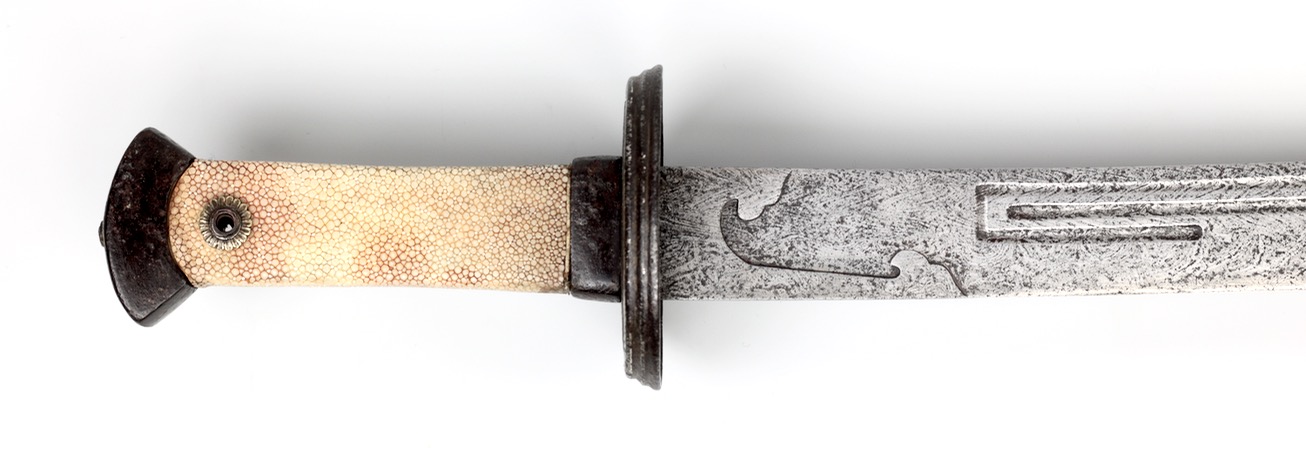



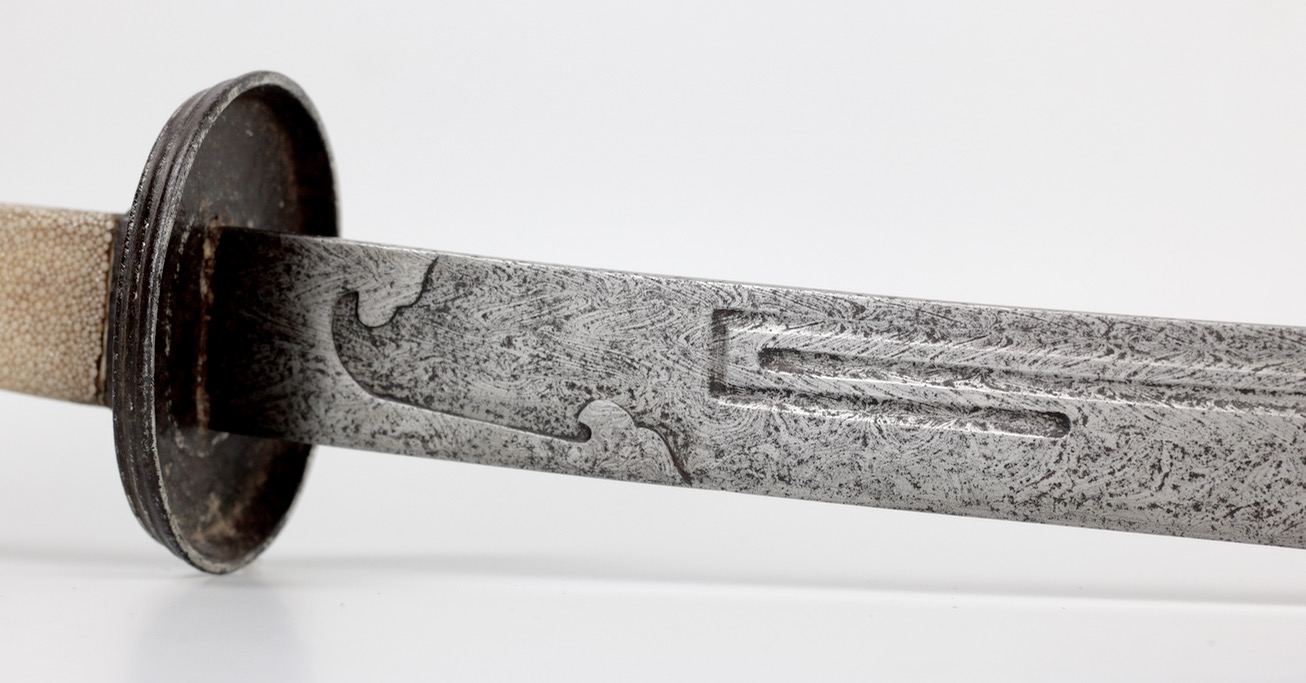


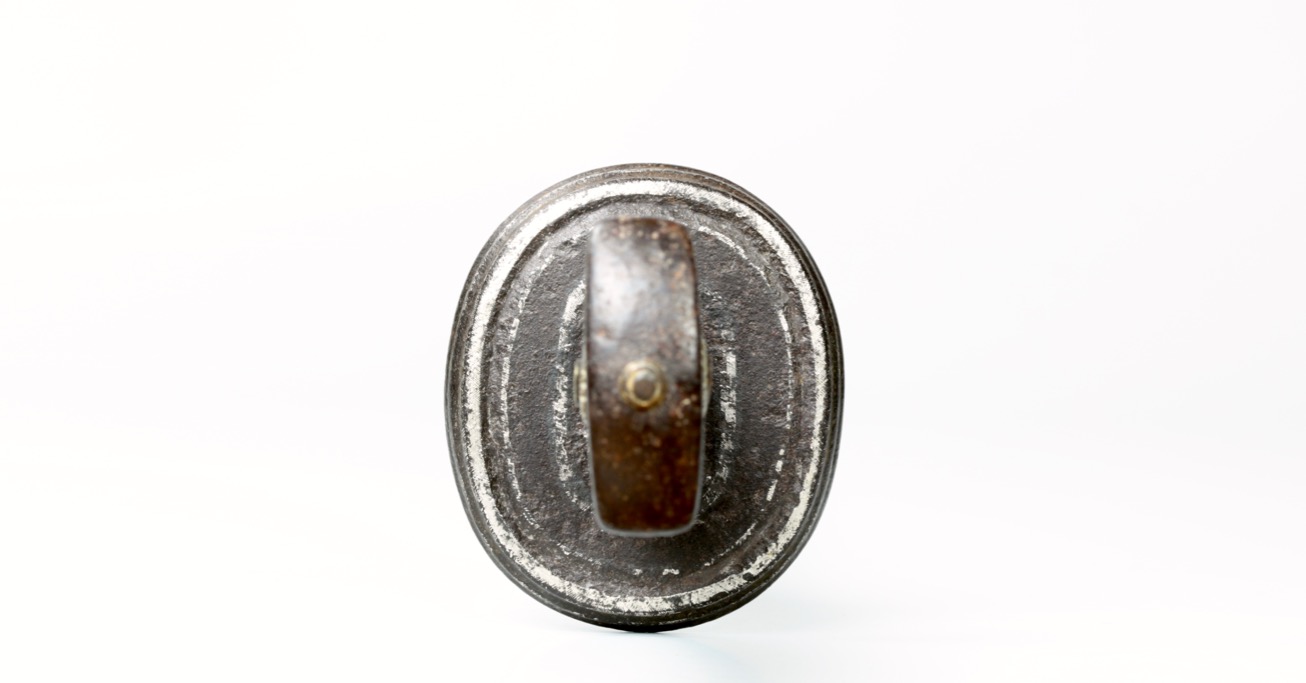
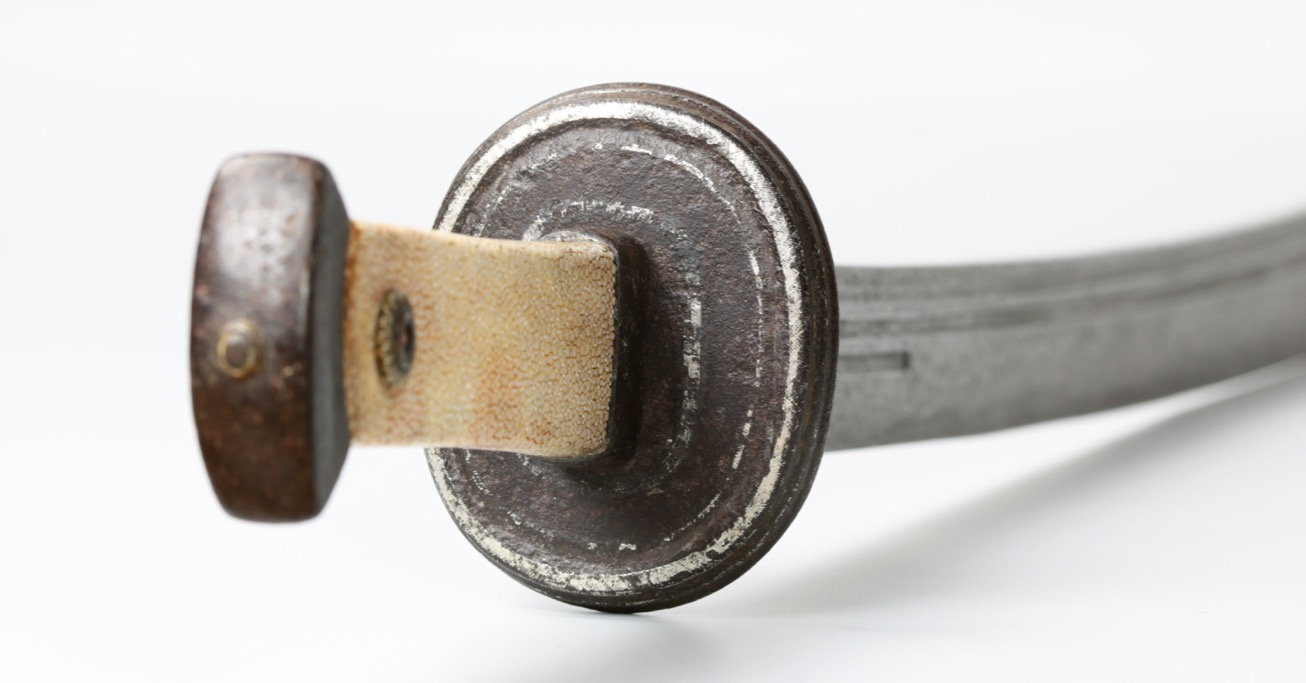

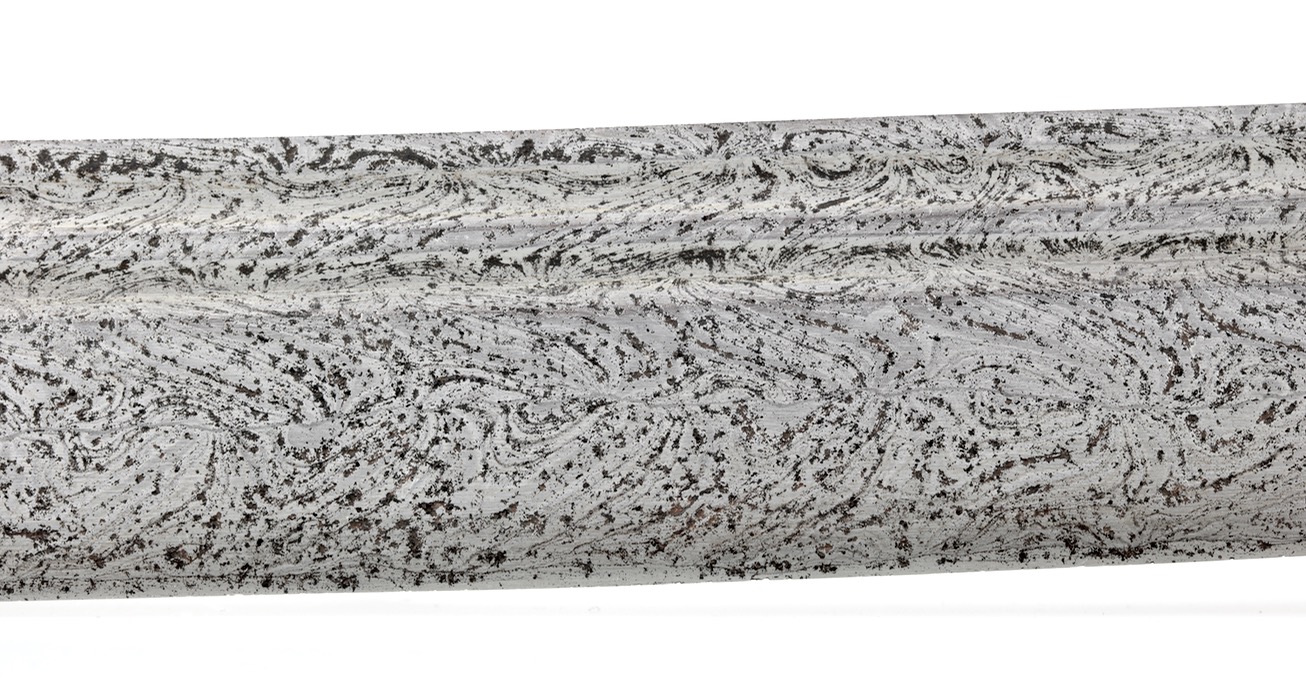

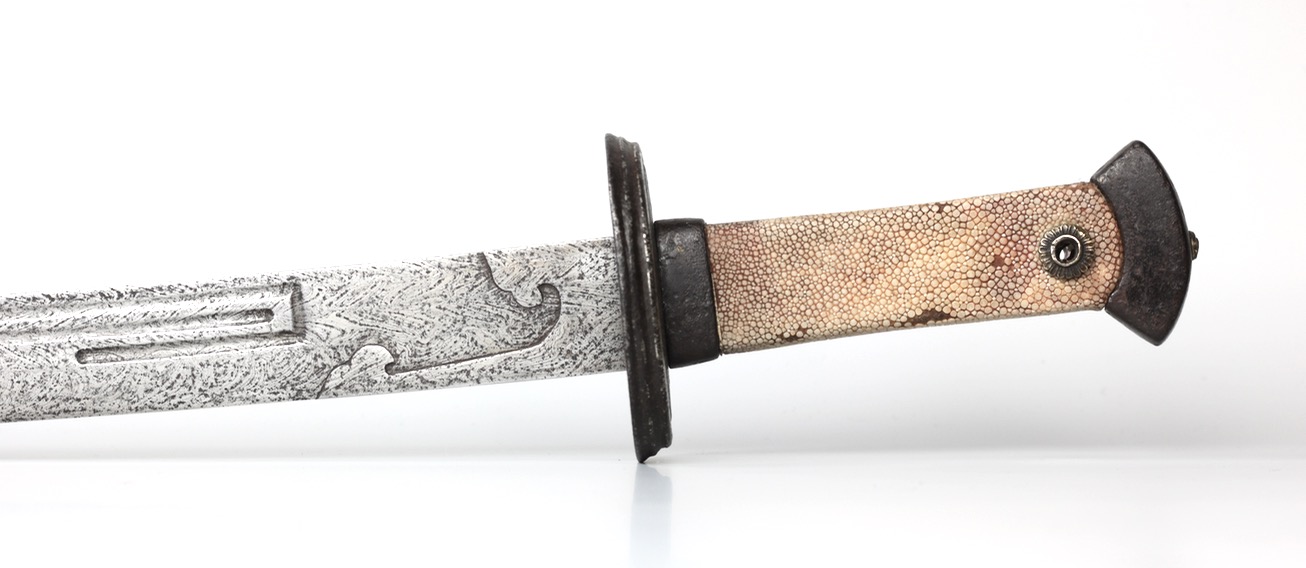

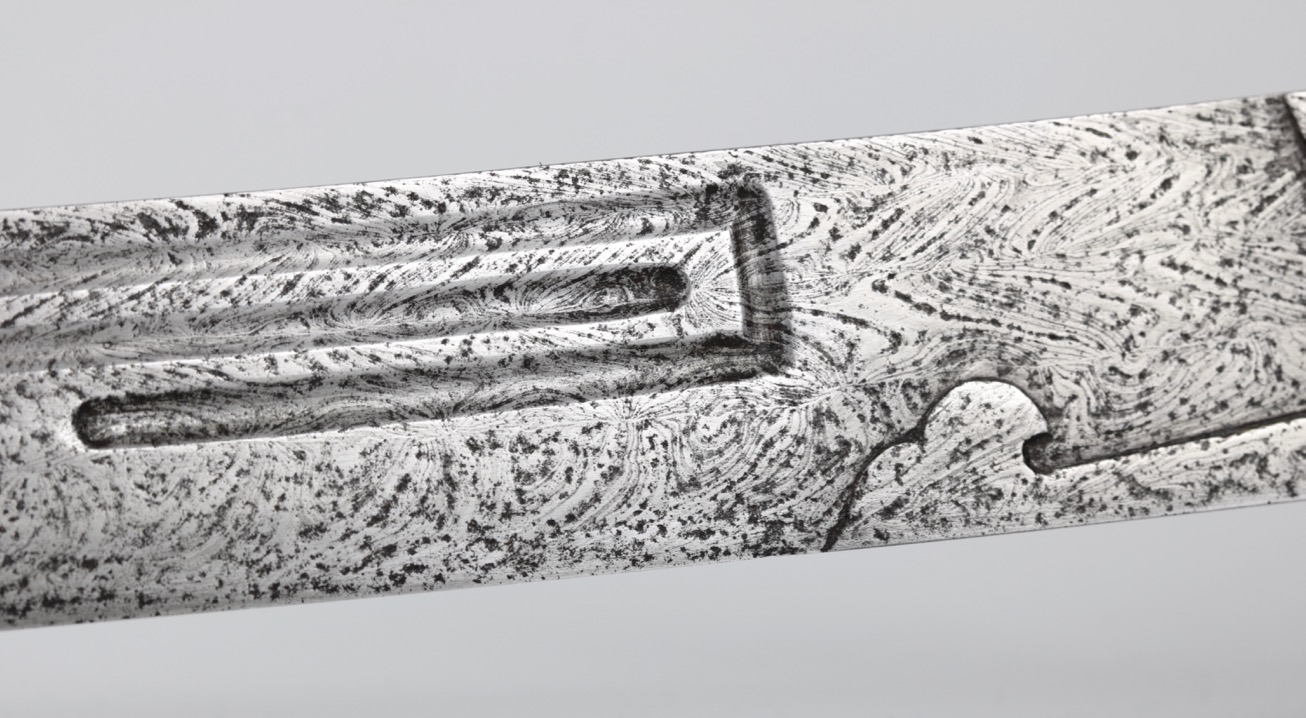
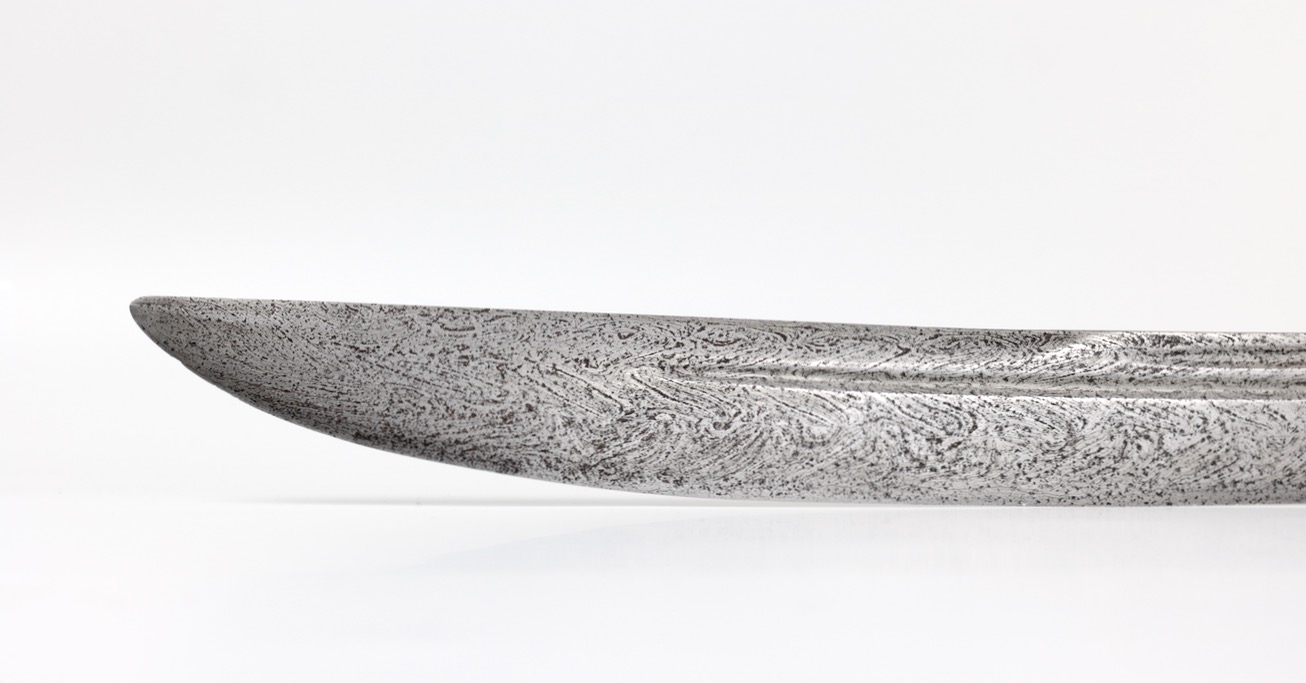

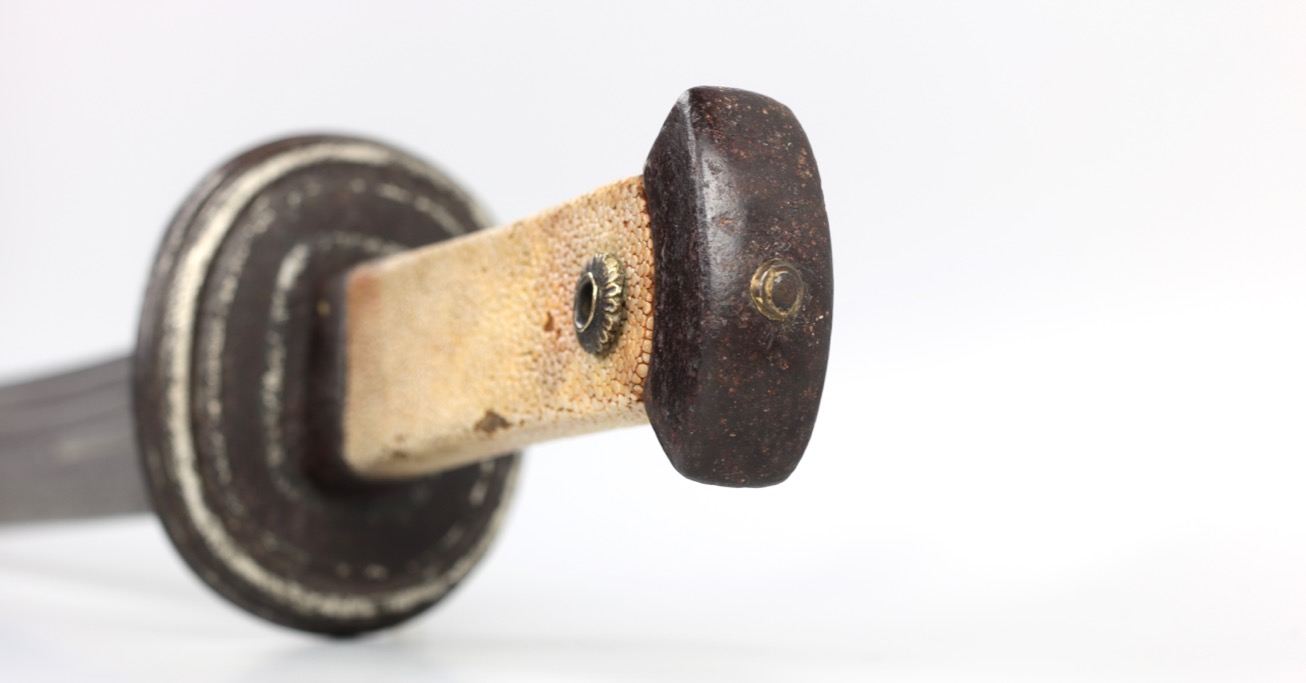

Of classic shape, with a leaf-shaped blade on a socket, connected by a cast bronze base.
A standard pattern Qing military saber, but with the rare addition of a label in Manchu.
A simple utilitarian weapon, probably made for rural martial artists or militia.
Southern Chinese officer style saber with later inscription H.Hunt 1876.
In the style of northern work of the 16th and 17th centuries

